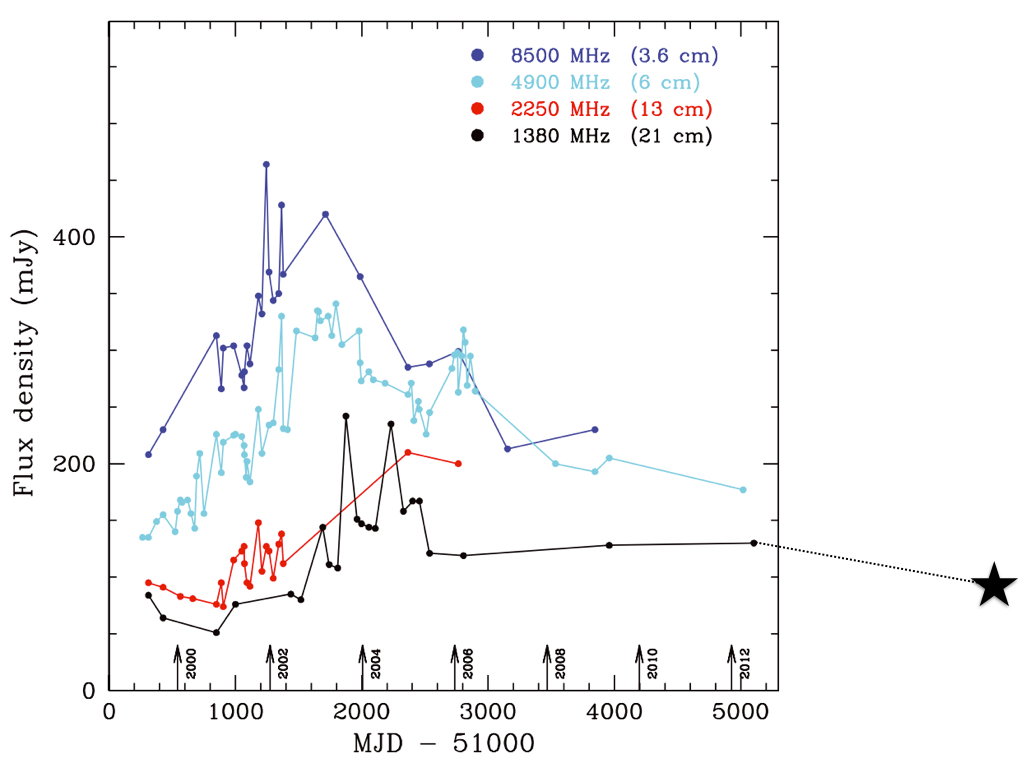Daily Image
20-12-2017Ger's Twinkling Quasar
| Submitter: | Tom Oosterloo (for Apertif Commissioning Team) |
| Description: | One highlight of Ger's scientific legacy is the radio source J1819+3845, better known as "Ger's Twinkling Quasar". In the beginning of 1999, Ger, together with Jane Dennett-Thorpe, discovered that this radio source was twinkling; it could change brightness by more than a factor two in less than an hour! Although a few radio sources were known that were varying slowly, the very fast variations of J1819+3845 were extremely unusual. And Ger being Ger (the more unusual something seemed, the more interesting it was to him!), he started to monitor J1819+3845. In the end, he followed the source for more than thirteen years and was able to derive some unique and bizarre astronomy from that. It turned out that the twinkling was due to interstellar scintillation, meaning that the variations are not due to the source itself, but are caused by the light travelling through an inhomogeneous, turbulent interstellar medium in between J1819+3845 and us. Because of the extensive monitoring, Ger was able to derive many many properties of the intervening material and J1819+3845 has become a unique source of information about the interstellar medium. One of the very interesting facts is that the medium causing the brightness fluctuations turned out to be very close to us, about 5 lightyears away. This makes it one of the nearest objects to the solar system. However, at some moment in 2006, J1819+3845 suddenly stopped twinkling. The most likely reason is that the medium causing the twinkling has moved out of the way and is not in front of the source anymore. But, as sudden the twinkling disappeared, it can also come back... For this reason, during the commissioning of Apertif we regularly observe J1819+3845, just to check whether it is still quiet, or that it has started again to twinkle. So far, no twinkling has been seen with Apertif. The plot shows the light curve of J1819-+845 taken from the summary paper Ger and J.-P. Marquart wrote about the source, with a new point added from the Apertif observations. Compared to the older data, the source has faded a little, but the decrease is slow and steady, with no fast variations. |
| Copyright: | astron |
| Tweet |  |
